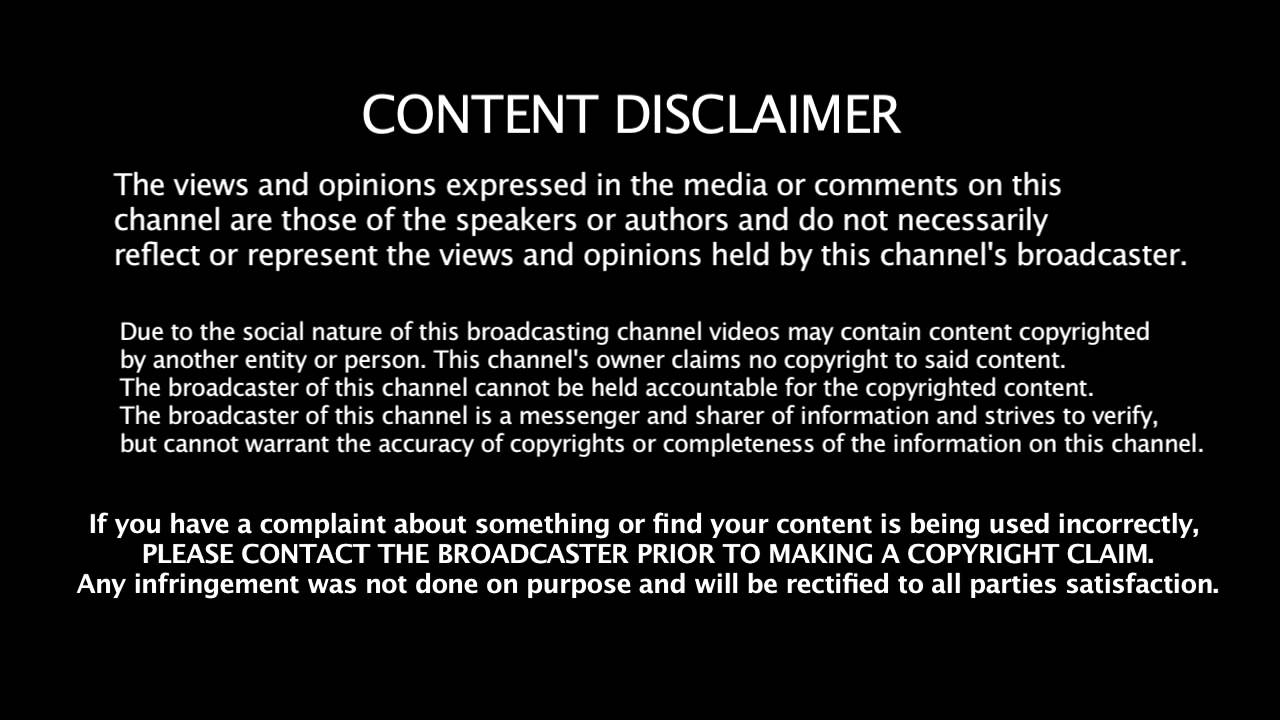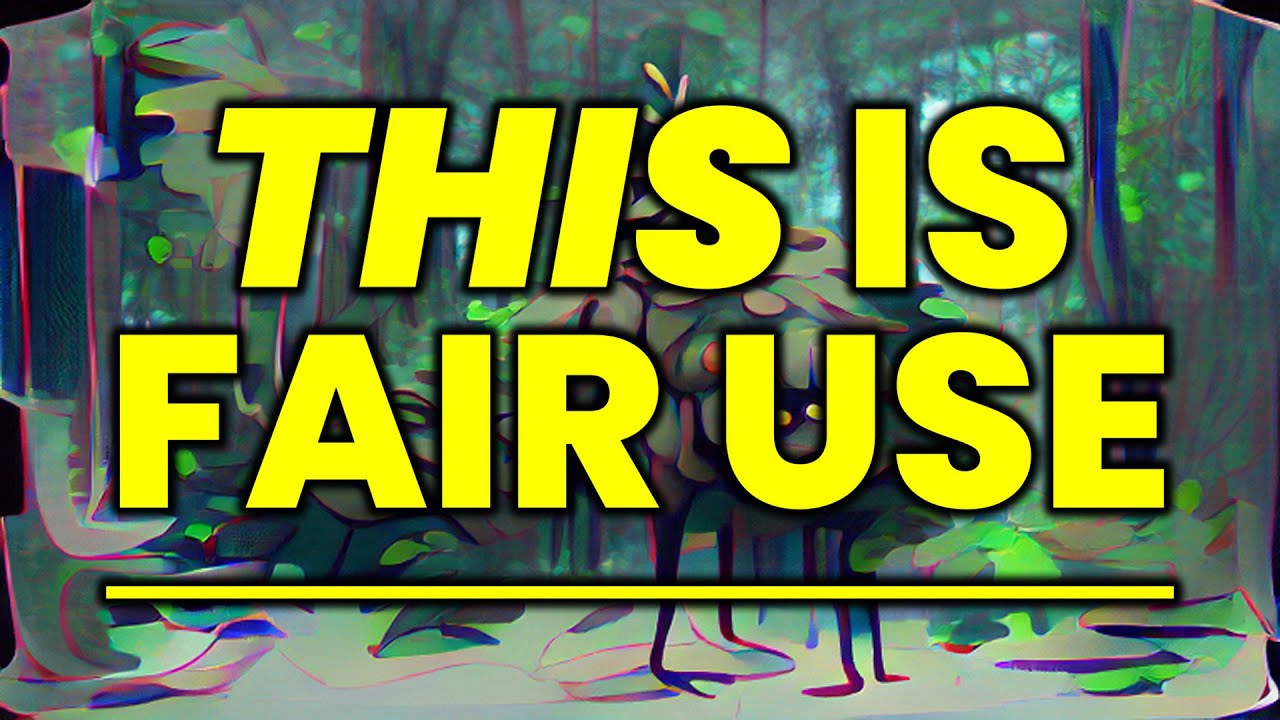When you're scrolling through YouTube, you might come across a video that shares clips from your favorite movie, educational content, or even snippets of someone else's vlog. Have you ever wondered if it's okay to use those clips? This is where the concept of "fair use" comes into play. Fair use is a legal doctrine that allows limited use of copyrighted material without needing permission from the rights holders. It can be a murky area, especially in the ever-evolving world of online content creation. Let's delve deeper into what fair use means and how it can be applied to videos on YouTube.
What Constitutes Fair Use?

Fair use isn't as straightforward as it may seem. In general, it hinges on a few critical factors that help determine whether your use of someone else's video can qualify as fair. Here are the main foundations of what constitutes fair use:
- Purpose and Character of Use: This involves whether the use is for commercial purposes or for educational, non-profit, or transformative purposes. Non-commercial or transformative uses that add new expression or meaning to the original work are more likely to be considered fair use.
- Nature of the Copyrighted Work: This factor looks at whether the original material is factual or creative. Creative works like movies and music typically get more protection than factual works, like news articles or educational content.
- Amount and Substantiality: How much of the original work are you using? Generally, the lesser the amount, the more likely it is to be fair use. However, even small clips can be problematic if they are seen as the "heart" of the work.
- Effect on the Market: Consider whether your use could impact the market for the original work. If your video acts as a substitute for the original and could harm its commercial value, it may not be considered fair use.
These criteria can sometimes blend together, making it tricky to navigate. Always remember, if you're unsure about whether something qualifies as fair use, it might be best to seek legal advice!
Examples of Fair Use in YouTube Videos

Understanding what constitutes fair use can be a bit tricky, especially when it comes to YouTube. Here are some real-life examples that help illustrate how content creators can stay within the bounds of fair use:
- Commentary: If a YouTuber uses a clip from a movie or a news segment to critique, analyze, or even react to the content, this can often be classified as fair use. For instance, a reviewer who discusses character development in a film while showing short clips can be protected under fair use.
- Parody: A well-known case involves the "Weird Al" Yankovic music videos, which are parodies of popular songs. These videos use snippets of the original material in a transformative way, making a strong case for fair use since they provide humor and commentary.
- Educational Content: Many educational YouTubers utilize clips from various sources to explain concepts. For instance, a science channel might show part of a documentary while explaining the scientific principles behind it. As long as the use is directly related to teaching and provides valuable commentary, it can be deemed fair use.
- News Reporting: When YouTubers use footage from events to inform or educate their audience—like including segments from a news broadcast—this may qualify as fair use, especially when the creator adds significant commentary or analysis.
Remember, while these examples can guide you, fair use can be subjective, so it's essential to consider how you’re using the material.
How to Transform Existing Content
Transforming existing content is key to ensuring your videos align with fair use principles. Here’s how to do it effectively:
- Add Original Commentary: When using someone else’s material, always aim to incorporate your own thoughts. This could involve providing in-depth analysis, personal opinions, or insights that enrich the content.
- Use Only What You Need: Limit the amount of original material you incorporate. If you’re discussing a specific scene, showing just the relevant portion can significantly strengthen your position on fair use.
- Change the Purpose: Transform the original by repurposing it for a different audience or with a different message. For instance, if you’re reviewing a film, shift the focus from entertainment to discuss its cultural impact.
- Incorporate Visuals and Context: Instead of using the original clip standalone, add your visuals, graphics, or text to provide context. This way, you’re creating something new rather than simply rehashing old content.
- Blend Genres: Combine content from different sources to offer a unique perspective. For example, integrating a movie clip, along with expert interviews and your narratives, can create a compelling new piece.
In summary, transforming content is about bringing something new to the table. It requires creativity and a thoughtful approach to ensure you respect intellectual properties while providing value to your audience.
Risks of Using Other People’s Videos
When it comes to using other people's videos on YouTube, there are definitely some risks you need to be aware of. Ignoring these could lead to significant consequences for your channel and content creation journey. Let’s dive into a few key risks:
- Copyright Strikes: If you use someone else’s video without permission, the original creator can issue a copyright strike. Accumulating just three of these can lead to your channel being taken down, which is a nightmare for any creator.
- Monetization Issues: Even if your intention is fair use, the original creator might claim the monetization rights, preventing you from earning any revenue from your video. This can be frustrating, especially if you’ve put a lot of work into your content.
- Legal Action: In some extreme cases, the original creator may pursue legal action against you for infringing on their copyright. Legal battles can be lengthy, costly, and stressful.
- Damage to Reputation: Using others' content without permission can tarnish your reputation as a creator. Your subscriber base may lose trust, especially if they perceive you as someone who does not respect hard work and creativity.
- Restricted Access: Depending on the nature of the violation, you might also face restrictions on your account or loss of access to certain features on YouTube.
So while it might be tempting to use existing videos to enhance your own content, it’s crucial to weigh these risks carefully.
Best Practices for YouTube Creators
As a YouTube creator, understanding and implementing best practices is essential for using other people’s videos appropriately. Here are some key guidelines to follow to ensure your content is respectful and compliant with copyright laws:
- Seek Permission: Whenever possible, reach out to the original creator and ask for permission to use their content. A simple message can go a long way.
- Use Creative Commons Content: Look for videos that are labeled for reuse under Creative Commons licenses. These videos are often available for use with certain stipulations, so always check the terms.
- Transformative Use: If you’re using clips, make sure you’re adding new meaning or value to the original content. This could mean adding commentary, analysis, or remixing the footage creatively.
- Credit the Original Creator: Even when you believe you’re compliant with fair use, it’s good practice to credit the original creator. This not only shows respect but can also be beneficial for your audience.
- Stay Informed: Laws regarding copyright and fair use can change. Stay updated on YouTube's policies and the legal landscape to ensure that you’re always acting responsibly.
By following these best practices, you’ll cultivate a more respectful community and protect your channel from potential pitfalls associated with using others' videos.
Understanding Fair Use of Other People's Videos on YouTube
Fair use is a legal doctrine that allows the limited use of copyrighted material without permission from the rights holder. On platforms like YouTube, understanding fair use is crucial for creators to avoid copyright infringement while still engaging with existing content. Here’s a breakdown of the key components of fair use as it applies to YouTube videos.
Four Factors Determining Fair Use:
- Purpose and Character of Use: Non-commercial, educational, and transformative uses are more likely to be considered fair use. For example, a video that critiques or comments on another video may qualify.
- Nature of the Copyrighted Work: Using factual works is more favorable compared to creative works. A documentary that analyzes a movie can lean towards fair use more easily than a video that merely re-uploads the movie.
- Amount and Substantiality: Using smaller, less significant portions of a video increases the likelihood of fair use. Citing a few seconds rather than entire scenes makes a difference.
- Effect on the Market: If your use of a video negatively impacts the market or value of the original work, it may not be considered fair use.
Best Practices for Using Others' Videos:
| Practice | Explanation |
|---|---|
| Give Credit | Always credit the original creator to acknowledge their work. |
| Transformative Use | Make sure your use adds new meaning or context to the original work. |
| Consult Legal Advice | If unsure, seek guidance from a legal professional specializing in copyright law. |
In conclusion, navigating fair use on YouTube requires careful consideration of the set guidelines and best practices, ensuring that creators can share and comment on content responsibly without infringing on copyright laws.
 admin
admin








